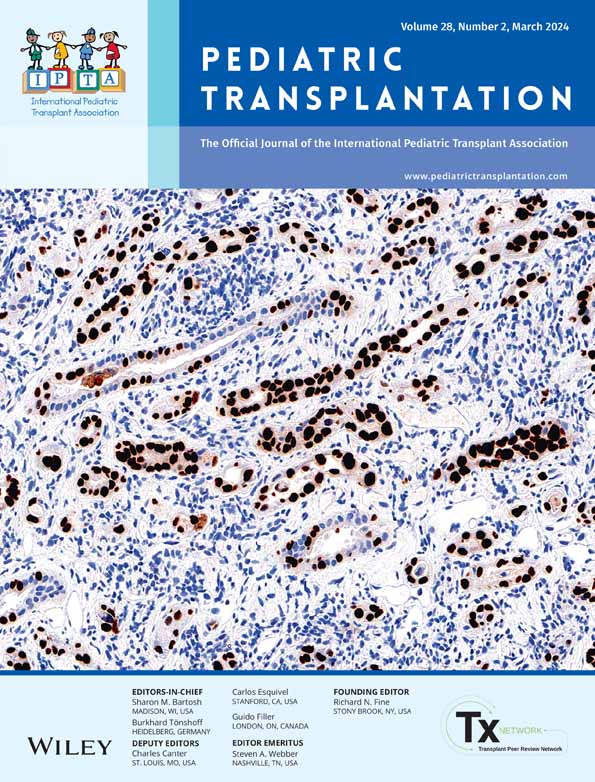Ten-year follow-up of cavoportal hemitransposition in pediatric liver transplantation for complete portomesenteric venous thrombosis: A case report and literature review
Abstract
Background
Portal vein thrombosis is a potentially devastating complication following pediatric liver transplantation. In rare instances of complete portomesenteric thrombosis, cavoportal hemitransposition may provide graft inflow. Here we describe long-term results following a case of pediatric cavoportal hemitransposition during liver transplantation and review the current pediatric literature.
Methods
A 9-month-old female with a history of biliary atresia and failed Kasai portoenterostomy underwent living donor liver transplantation, which was complicated by portomesenteric venous thrombosis. The patient underwent retransplantation with cavoportal hemitransposition on postoperative day 12.
Outcome
The patient recovered without further complication, and 10 years later, she continues to do well, with normal graft function and no clinical sequelae of portal hypertension. CT scan with 3-D vascular reconstruction demonstrated recanalization of the splanchnic system, with systemic drainage to the inferior vena cava via an inferior mesenteric vein shunt. The cavoportal anastomosis remains patent with hepatopetal flow. Of the 12 previously reported cases of pediatric cavoportal hemitransposition as portal inflow in liver transplantation, this is the longest-known follow-up with a viable allograft. Notably, sequelae of portal hypertension were also rare in the 12 previously reported cases, with no cases of long-term renal dysfunction, lower extremity edema, or ascites.
Conclusions
Long-term survival beyond 10 years with normal graft function is feasible following pediatric cavoportal hemitransposition. Complications related to portal hypertension were generally short-lived, likely due to the development of robust collateral circulation. Additional reports of long-term outcomes are necessary to facilitate informed decision making when considering pediatric cavoportal hemitransposition for liver graft inflow.
Open Research
DATA AVAILABILITY STATEMENT
Data sharing is not applicable to this article as no data sets were generated or analyzed during the current study.




